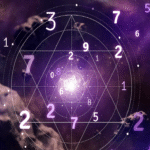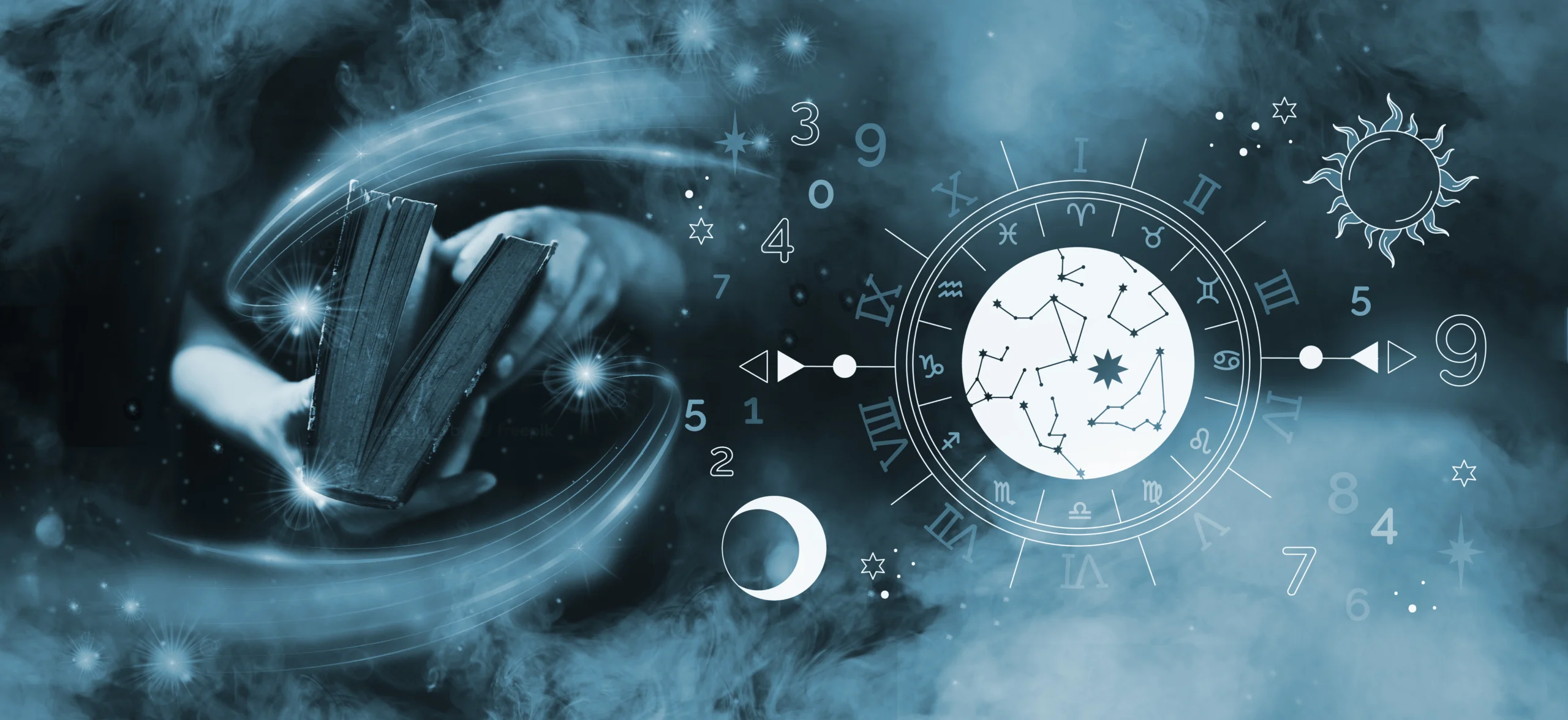This analysis delves into the profound influence of Shani (Saturn), the great karmic teacher and taskmaster in Jyotish (Vedic Astrology). We explore the Shani Sign Meaning (equivalent to Saturn Sign Meaning) through traditional scriptures, contemporary understanding, the student’s learning path, and practical application. Often feared, Shani represents structure, limits, discipline, responsibility, sorrows, delays, longevity, and the consequences of past actions (Karma and Discipline Astrology). Understanding your natal Shani by Rashi (Sidereal sign), Bhava (house), strength, and aspects (Planetary Rulers Saturn – Shani ruling Makara/Capricorn & Kumbha/Aquarius) reveals your greatest Astrology Life Lessons and Where You Face Challenges Astrology, ultimately leading to maturity and detachment.
LENS 1: Traditional Foundation (The Traditional Jyotishi’s View)
Key Findings: Traditionally, Shani is considered the primary natural malefic (Papak Graha), representing karma, time, death (as Ayush Karaka – significator of longevity), sorrow, disease, limitation, duty, responsibility, detachment (vairagya), service, agriculture, minerals, and the masses. Its slow movement (~2.5 years per sign) brings long-lasting effects. A strong Shani (Uchcha/exalted in Libra, Swakshetra in Capricorn/Aquarius, Moolatrikona in Aquarius) in a good house can bestow discipline, endurance, authority through responsibility, and longevity.
Detailed Analysis:
Classical Jyotish meticulously assesses Shani’s condition. Afflictions (Neecha/debilitated in Aries, combust, aspected by other malefics, in Dusthana houses) can indicate chronic suffering, delays, obstacles, hardship, fear, and association with low or difficult work. Its powerful Drishtis (aspects the 3rd, 7th, and 10th houses/signs from itself) bring its restrictive, structuring, or burdensome influence to those areas. Shani’s transit over sensitive points, especially Chandra (Moon) – known as Sade Sati – is a period of intense karmic reckoning and testing.
- Technique Deep Dive: Sade Sati: This critical ~7.5-year period occurs when transiting Shani passes through the 12th, 1st, and 2nd Bhavas from the natal Chandra (Moon). It’s traditionally seen as a time of challenges, pressures, losses, and facing consequences, but also profound maturation and shedding of attachments. Its severity depends on natal Shani’s strength and the Moon’s condition.
- Expert Insight (Traditional Source): “Shani signifies longevity, cause of death, adversity, servants, old age, poverty, disease, ignominy, detachment, and the karma accumulated from past lives.” – Paraphrased significations from classical texts.
- Hidden Wisdom: Shasha Yoga: One of the Pancha Mahapurusha Yogas, formed when Shani is strong (exalted or own sign) in a Kendra (1st, 4th, 7th, 10th house). Despite Shani being a malefic, this yoga grants leadership, authority, endurance, land, discipline, and success through perseverance and responsibility, often in service to many.
- Astrological Framework Map Suggestion: Diagram showing Shani’s rulerships (Capricorn, Aquarius), exaltation (Libra), debilitation (Aries). Highlight its Karaka status for longevity, sorrow, duty, the 8th/12th/6th Bhavas. Illustrate its 3rd, 7th, 10th Drishtis.
- Critical Considerations: Viewing Shani only as ‘bad’ ignores its essential role in providing structure, discipline, realism, and facilitating spiritual growth through detachment. Its challenges often lead to greatest strengths.
LENS 2: Contemporary Interpretation Framework (The Modern Jyotishi’s Approach)
Key Findings: Contemporary Jyotish retains Shani’s core meanings but emphasizes its psychological role as the ‘reality principle’, the inner architect of structure, the teacher of patience and responsibility, and the catalyst for maturity. Astrology Life Lessons are often learned through Shani’s influence. Its placement shows Where You Face Challenges Astrology but also where you can build lasting foundations.
Detailed Analysis:
The Rashi (Sidereal) placement of Shani describes the style of our discipline, fears, and approach to responsibility – Shani in Vrishabha (Taurus) seeks security through structure, fears instability; Shani in Simha (Leo) struggles between ego and duty, learns leadership through responsibility; Shani in Meena (Pisces) faces challenges with boundaries, learns discipline through service/spirituality. Bhava placement shows the area of life demanding structure, facing limitation, or requiring long-term effort (e.g., 4th Bhava: responsibility/challenges at home; 7th Bhava: serious/delayed partnerships; 10th Bhava: career built through perseverance).
- Technique Deep Dive: Shani-Chandra Relationship (Sade Sati & Beyond): The aspect or conjunction between natal Shani and Chandra (Moon) is crucial for understanding underlying anxiety, pessimism, or emotional resilience. Sade Sati transit is interpreted psychologically as a period forcing confrontation with fears, responsibilities, and emotional security issues.
- Expert Insight (Modern Jyotishi): “Shani isn’t punishment; it’s the loving, stern teacher showing us where our foundations are weak, where we avoid responsibility, and where we must build strength and resilience through effort and time. Its lessons are hard-won but enduring.” – Contemporary Jyotish Practitioner.
- Alternative Approaches: Exploring Shani’s connection to societal structures, governmental authority, professions involving long-term planning (architecture, administration), and its role in grounding spiritual practice with realism.
- Astrological Framework Map Suggestion: A visual showing Shani as a structural foundation or boundary wall within the chart. Connect it to themes of ‘Time’, ‘Karma’, ‘Discipline’, ‘Fear’, ‘Responsibility’, ‘Maturity’, ‘Detachment’. Rashi/Bhava placements modify these themes.
- Critical Considerations: Over-emphasizing Shani’s challenging aspects can induce fear. Focusing on its constructive potential – building structure, developing patience, achieving mastery through discipline – provides a more balanced perspective.
LENS 3: Learning Path Analysis (The Student’s Journey)
Key Findings: Students must move beyond fearing Shani to understanding its necessary role in karmic maturation. Learning its significations (including positive ones like endurance), rulerships, dignities, powerful aspects (3, 7, 10), and the basics of Sade Sati calculation/interpretation are fundamental steps. Differentiating Shani’s structure from Guru’s expansion is key.
Detailed Analysis:
Understanding Saturn Sign Meaning (Vedic) involves associating its Rashi placement with specific types of fears, responsibilities, and approaches to discipline. Students practice tracing Shani’s Drishtis and interpreting their restrictive or structuring influence. Learning about Shasha Yoga shows Shani’s potential for great strength. Comprehending Sade Sati as a major life cycle requires careful study of its calculation relative to the natal Moon and its potential effects. Karma and Discipline Astrology concepts are central here.
- Real-World Application: Observing one’s own areas of limitation, fear, responsibility, and where long-term effort yields results, correlating this with natal Shani’s placement. Analyzing the impact of Sade Sati periods on oneself or others.
- Student Question: “Is Sade Sati always a terrible period?” Answer: Not necessarily. While often challenging, Sade Sati’s impact depends heavily on the natal strength of Shani and Chandra, the houses involved relative to the Lagna, the running Dasha period, and the individual’s maturity. For some, it’s a time of significant achievement through hard work and discipline, or deep spiritual growth through detachment. It forces realism.
- Expert Insight (Jyotish Student): “Learning Shani’s 3rd and 10th aspects was eye-opening! It explained pressures in areas of my chart I hadn’t understood before. Realizing Shani represents structure, not just sorrow, changed my whole perspective.”
- Common Misconceptions vs. Reality: Misconception: Shani only brings bad luck and suffering. Reality: Shani brings consequences of karma, necessitates discipline, and bestows endurance, realism, and structure – qualities essential for long-term success and spiritual growth. Misconception: Shasha Yoga removes Shani’s malefic nature. Reality: Shasha Yoga gives power and status through Shani’s positive qualities (discipline, responsibility), but Shani retains its core nature and can still bring challenges or delays, albeit from a position of strength.
LENS 4: Practical Implementation (The Practical Application Expert’s Guidance)
Key Findings: Practical Jyotish uses Shani analysis to understand core life challenges, karmic lessons, career longevity/type (esp. service/labor/technical fields), health issues (chronic conditions, bones, teeth), and periods requiring endurance (Sade Sati, Shani Dasha). Advising appropriate Upayas (remedies) for afflicted Shani is common.
Detailed Analysis:
Consultants assess Shani’s strength, placement, aspects, and transit effects to guide clients through challenges related to Where You Face Challenges Astrology. Advice often centers on cultivating patience, discipline, responsibility, and realistic expectations in the areas influenced by Shani. Upayas aim to propitiate Shani and mitigate its negative effects, often involving service (seva), discipline, charity (esp. to the poor/elderly), fasting on Saturdays, or chanting Shani mantras (e.g., Om Sham Shanaye Namah). Understanding the Saturn Sign Meaning (Vedic) helps tailor advice.
- Real-World Application: Choosing careers requiring endurance and structure (if Shani influences the 10th house), developing disciplined practices (sadhana) during challenging Shani periods, performing seva, managing chronic health issues with discipline, navigating Sade Sati with awareness and patience.
- Technique Deep Dive: Shani Dasha: The Mahadasha (major period) of Shani lasts 19 years in the Vimshottari system. Analyzing the natal Shani’s condition is crucial for understanding the potential themes (challenges, responsibilities, achievements through effort, detachment) that will dominate this long period.
- Expert Insight (Jyotish Consultant): “Shani reveals where life demands our most serious attention and effort. By understanding its placement, we can guide clients to build resilience, face karmic lessons with courage, and ultimately gain the profound strength and wisdom that only Shani can teach.”
- Practical Tip: Identify the Bhava your natal Shani occupies. This area of life requires your consistent, disciplined effort and patience over the long term. Structure built here will be enduring. Don’t expect quick or easy results.
- Chart Example Suggestion: A sample Kundali showing Sade Sati in progress, with annotations explaining the transit relative to the Moon and potential areas of impact. Another chart could show a strong Shasha Yoga.
PERSPECTIVE INTEGRATION MATRIX
| Feature | Traditional View | Contemporary View | Student Focus | Practical Use | Integration Point |
| Core Role | Karma, Time, Sorrow, Longevity | Reality, Structure, Maturity | Dignities, Aspects(3,7,10), Sade Sati | Assess Challenges, Guide Discipline | Understanding psychological reality (contemp) helps frame traditional karmic lessons (trad/student). |
| Keywords | Duty, Delay, Loss, Discipline | Fear, Responsibility, Endurance | Sade Sati Rules, Shasha Yoga | Career/Health Advice, Remedies | Awareness of Sade Sati rules (student) informs practical navigation advice (practical). |
| Nature | Great Malefic, Teacher (Stern) | Architect, Tester, Catalyst | Differentiate Guru/Shani | Identify Life Lessons, Suggest Upayas | Recognizing catalyst role (contemp) helps identify lessons & suggest Upayas (practical). |
| Application | Judge Longevity/Hardship | Understand Fears/Structures | Master Core Concepts | Build Resilience, Manage Karma | Understanding structure (contemp) enables building resilience to face karma (practical/trad). |
MISCONCEPTION ANALYSIS
| Common Belief | Jyotish Reality |
| Shani is purely evil and destructive. | Shani is a functional malefic representing the principle of limitation and consequence, essential for structure, discipline, and karmic balancing. It’s a necessary teacher. |
| Sade Sati ruins everyone’s life. | Sade Sati is a challenging period of karmic reckoning and maturation. Its effects vary vastly based on the individual chart and can bring positive results through effort. |
| Wearing a Blue Sapphire fixes Shani issues. | Neelam (Blue Sapphire) is a potent gemstone for Shani but extremely sensitive. It should ONLY be worn after careful analysis by a qualified Jyotishi, as it can amplify negative effects if unsuitable. |
| Appeasing Shani eliminates all hardship. | Upayas can mitigate suffering and align one with Shani’s energy, but they don’t erase karma. Discipline, responsibility, and acceptance are also key. |
KEY DEVELOPMENTS & FUTURE DIRECTIONS (Evolution Timeline)
- Classical Period: Shani’s significations, rulerships, dignities, aspects, and key transits like Sade Sati established in foundational texts. Shasha Yoga defined.
- Medieval Period: Further commentaries refining interpretations of Shani’s effects in different houses, signs, and Dashas. Detailed rules for Sade Sati effects elaborated.
- Modern Period: Increased psychological interpretation – Shani linked to fear, anxiety, depression, but also structure, discipline, achievement, and maturity. Exploration of Sade Sati’s transformative potential beyond just hardship.
- Contemporary: Shani’s role analyzed in context of career longevity, societal structures, governance, environmental responsibility. Increased awareness and availability of traditional Upayas. Software enables precise tracking of Sade Sati and other transits.
- Future: Deeper integration of Shani analysis with psychological concepts of resilience and shadow work, continued exploration of its role in health and longevity (linking Jyotish and Ayurveda), refined understanding of Sade Sati based on individual factors.
SYNTHESIS & RECOMMENDATIONS (Celestial Integration)
Shani (Saturn) is the great equalizer and teacher of time, karma, and consequence in Jyotish. Integrating perspectives means respecting its power and karmic weight (Traditional), understanding its psychological function in building structure and maturity (Contemporary), mastering its specific rules and cycles like Sade Sati (Student), and applying this knowledge to navigate challenges with discipline, patience, and responsibility (Practical). Befriending Shani means accepting reality, doing the hard work, and finding freedom in detachment.
Recommendations:
- Identify Your Shani Placement: Note its Rashi (Sidereal), Bhava, and Nakshatra.
- Assess Shani’s Strength: Check its dignity, aspects (Drishti) received and cast (3, 7, 10), and associations. Note if Shasha Yoga forms.
- Analyze Areas Aspected by Shani: The houses receiving Shani’s Drishti require extra structure, patience, or face delays/responsibilities.
- Understand Your Sade Sati Cycle: Know when your Sade Sati periods occur (based on your natal Moon) and approach them with awareness.
- Embrace Discipline: Consciously cultivate discipline, patience, and responsibility in the areas of life indicated by Shani’s placement and aspects.
- Consider Appropriate Upayas: If facing significant Shani-related challenges, consult a qualified Jyotishi for personalized remedies (which often involve service, discipline, and charity).
FURTHER AREAS OF STUDY
- Guru (Jupiter) in Jyotish (The balancing principle of expansion and grace)
- Rahu and Ketu (The Nodes) Explained in Jyotish (Other major karmic influencers)
- The Significance of Bhavas (Houses) in Jyotish (esp. Dusthanas 6, 8, 12 and Kendras 1, 4, 7, 10)
- Sade Sati In-Depth Analysis
- Shasha Yoga and other Pancha Mahapurusha Yogas
- Upayas (Remedial Measures) in Vedic Astrology









